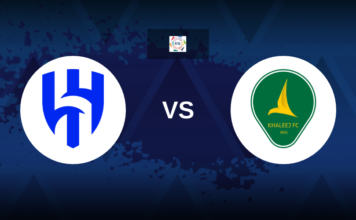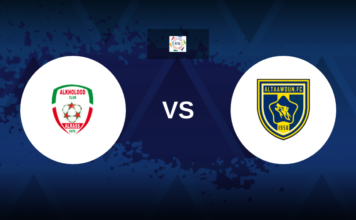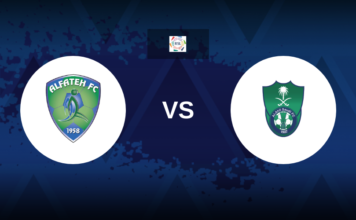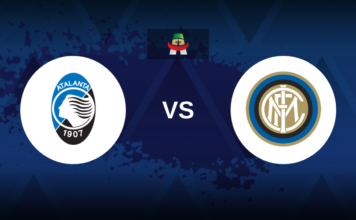A 4-0 thrashing in the semi-final leaves serious questions over Xabi Alonso’s tactics, Real Madrid’s pressing intensity, and whether a 4-4-2 diamond suits their stars.
Paris Saint-Germain produced one of their most dominant performances in recent memory with a 4-0 victory over Real Madrid in the Club World Cup semi-final. It wasn’t just a defeat — it was a dismantling, and one that brutally exposed the structural flaws in Xabi Alonso’s tactical approach.
With relentless pressing, surgical positional rotations, and wide overloads, PSG tore through Madrid’s diamond midfield with ease. The result? A tactical nightmare that leaves fans and analysts alike questioning whether this formation can survive against Europe’s elite.
The Diamond Collapse
Alonso opted for a 4-4-2 diamond, a shape that demands clear and committed pressing schemes, especially against teams with attacking width and technical superiority. The setup gave Madrid a central presence but left gaping holes down the flanks — precisely where PSG launched their most dangerous attacks.
Unlike flatter midfield shapes, the diamond forces managers to choose how to close down opposition fullbacks: with midfielders shifting wide, or fullbacks pushing up with covering rotations. Alonso chose the former, relying on midfielders like Jude Bellingham and Gula to step wide. The result? Large swathes of space and slow pressure, which PSG exploited mercilessly.
Passive Pressing and the Front Three Conundrum
Despite having Kylian Mbappé and Vinícius Júnior up front — two of the world’s most electrifying forwards — Madrid’s press was almost non-existent. The front three failed to engage PSG’s deeper line, allowing them to circulate possession comfortably and pick their moments.
This gave PSG all the time in the world to execute their fluid rotations. Dembele’s work rate highlighted the gap between both sides’ forward lines. When PSG pressed, they won the ball high and transitioned quickly. Madrid, on the other hand, were bypassed with ease.
Overloads Out Wide
With Madrid’s diamond focused centrally, PSG simply vacated the middle and overloaded the flanks. As Bellingham or another midfielder stepped out to pressure, PSG players rotated into the half-spaces, creating two-on-ones and dragging Madrid’s shape apart.
This movement was perfectly illustrated in the buildup to PSG’s third goal. A failed press, a wide switch, a quick one-two on the flank, and Madrid’s defensive block was torn open. It was a devastating display of modern positional play meeting a rigid shape unfit to counter it.
Late Adjustments, Too Little Too Late
Eventually, Alonso shifted to a flatter 4-4-2 with García dropping in to help midfield coverage. This adjustment marginally improved Madrid’s defensive control but came far too late. By then, PSG had all but secured their ticket to the final.
Madrid were never truly able to recover. Their best moments came on the counter, but even those were snuffed out quickly by PSG’s aggressive rest-defense and excellent pressing structure.
Attacking Issues Compound the Problem
Offensively, Madrid’s diamond also struggled. With fullbacks pinned by PSG’s wingers and central players crowded in tight zones, they lacked natural width to stretch the game. Passes forward were forced, leading to turnovers and further chances for PSG to dominate transitions.
Mbappé and Vinícius were isolated, often surrounded by defenders with no outlets wide. Even when Madrid advanced into the final third, there was little cohesion or clarity — just a mass of bodies and little structure.
What Now for Real Madrid?
This loss doesn’t mean Alonso’s system is a failure — but it certainly highlighted its current limitations. A potential switch to a back five, which the team experimented with earlier in the tournament, could solve many of the issues seen here. With wing-backs providing width and extra defensive cover, Madrid could balance possession and pressing far more effectively.
But the biggest question remains the personnel: can a front line featuring both Mbappé and Vinícius Jr. function in a high-pressing team? On this evidence, it looks unlikely. Both are brilliant on the ball, but neither showed the off-ball intensity needed for Alonso’s pressing game to work.
Final Thoughts
This wasn’t just a tactical misstep — it was a wake-up call. PSG exposed every weakness in Real Madrid’s setup, turning what could’ve been a close contest into a statement performance.
For Alonso, the lesson is clear: modern football punishes hesitation and poor structure. If Madrid are to challenge at the top, tactical flexibility and personnel suited to the system must become priorities.
The Club World Cup final now awaits for PSG — deservedly so after a performance that combined grit, intelligence, and ruthless execution.







